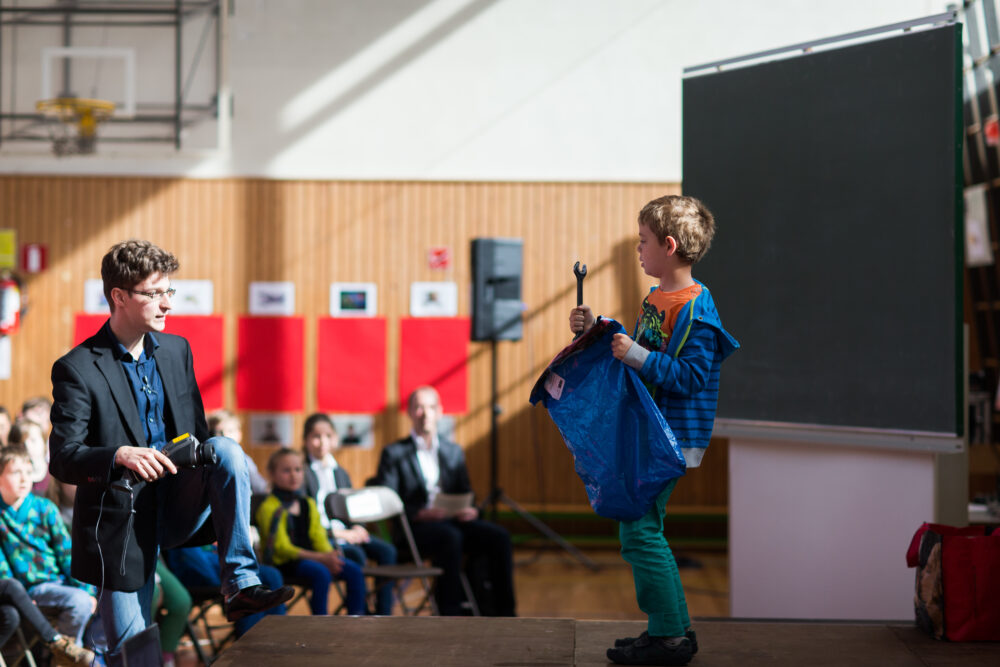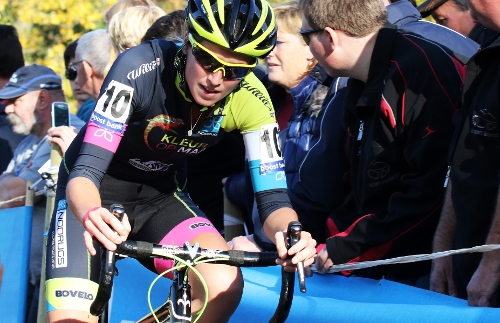How to make it into the news (and detect mechanical doping)
Wouldn’t you secretly love for your research to be featured on the radio, on news websites or in the newspaper?
This happened to Jeroen Peeters, a PhD student in the University of Antwerp’s Faculty of Applied Engineering Sciences. His heat camera just happens to hold the key to detecting hidden motors in race bikes.

I met Jeroen in 2015 when he was one of the participants in the Science Battle. There, he demonstrated to the kids how tiny tears in airplanes could be detected using a heat camera. On March 7th 2016 his heat camera was featured across all media. How on earth did he do that?
How it all began
In late January this year, a tiny motor was discovered in cyclist Femke Van den Driessche’s race bike. The sporting world was suddenly rocked upside down and there was talk of ‘mechanical doping’. The cycling federation swiftly sent out a team of inspectors to unmask any more fraudsters. Their biggest challenge: to easily trace down any hidden motors in bicycle frames.
A first (too simple) idea?
Cyclist Fabian Cancellara had once been thought to have hidden a motor inside his bicycle. Jeroen Peeters: ‘Back then, a colleague of mine had asked me whether the motor could be detected using the heat camera. I saw no reason why this would not be possible, seeing that every motor generates heat. But I thought: Surely, someone must have already suggested an idea this straightforward. So I didn’t give it another thought.’
The official solution
Once mechanical doping was discovered in the case of Femke Van den Driessche, the Belgian cycling federation decided to go about scanning all bikes using X-rays. A potentially quite harmful technique, according to the Federal Agency of Nuclear Control. Jeroen Peeters: ‘I couldn’t believe my ears. How could they even consider taking such a dangerous route?’
Aha!
That is when Jeroen resurfaced his idea: ‘I started experimenting with a tiny motor hidden in a bike frame. The results were amazing. Even a small motor generating 100 times less energy than a real bike frame motor was still traceable.’ Jeroen posted a video of this on YouTube (in Dutch) and broadcast his idea to the rest of the world through the University of Antwerp’s press service. The media swarmed to the article.
Where did Jeroen come up with this idea?
‘This is a classic example of the KIS principle: Keep It Simple. In fact, a trick I learned during one of your presentations,’ Jeroen tells me when I ask him how he came up with the idea.
In preparation of the Science Battle, the participating scientists attend a master class in presentation techniques. During this class, we train them to take a look at their research from a different angle. This helps them to present their work in an even clearer and more convincing manner to a wide audience.
Jeroen Peeters: ‘By returning to the basics, you actually learn to reflect upon the simplicity of your problem.’
What is in it for Jeroen?
Jeroen Peeters: ‘My supervisor and I are now working together closely with Flanders’ Bike Valley to evaluate further steps. I enjoy the fact that my research is getting some added attention, and thanks to this new link to bicycle motors, explaining my line of work has become so much easier.’
What can we learn from this?
Five lessons that can help you make it into the news with your research.
- Coffee breaks are vital. It was Jeroen’s colleague who asked him whether heat cameras could detect motors. The best ideas often come when you least expect them.
- Create visuals. Jeroen had pictures of his work and posted a video on YouTube. The media want to see what you are talking about.
- Collaborate with your communications service. They have the expertise and press contacts.
- Make it simple. You should be able to tell your story in a simple manner. Presenting to children is a very effective way of breaking something down to the basics.
- Link your research to a hot item. Without the uproar caused by Femke Van den Driessche, no-one would have had any immediate interest in the heat camera. Smart move by Jeroen Peeters.
Have you made it into the news with your research? Or do you believe you should? Share your experiences in the comments below.
– – –
Jeroen Peeters is part of the research group Op3Mech within the Faculty of Applied Engineering Sciences of the University of Antwerp. Jeroen is doing his PhD study under the supervision of professor and keen cyclist Gunther Steenackers.
Photo Femke Van den Driessche by Dimitri Maladry – wikiportret.nl, Creative Commons Attribution-Share Alike 4.0
Photo Jeroen Peeters by Hung Tran for The Floor is Yours
